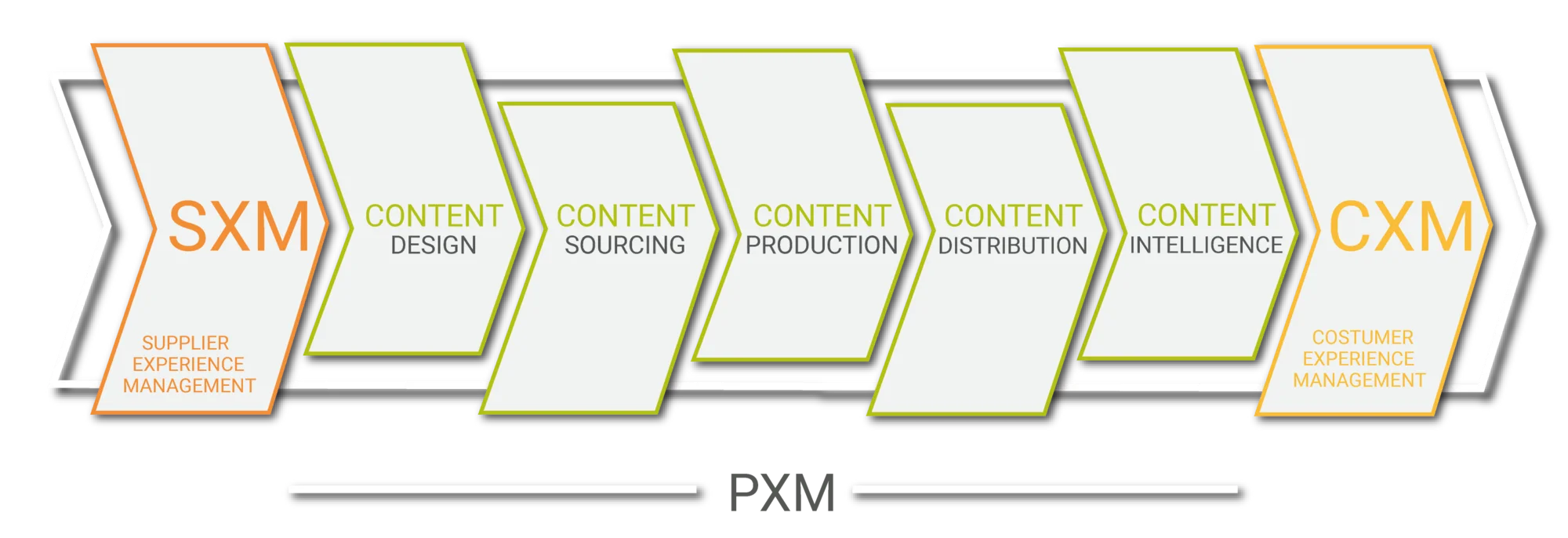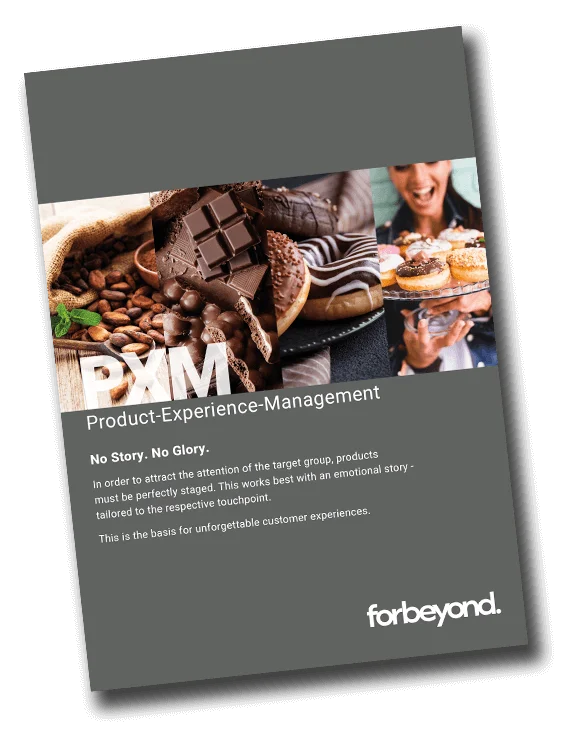Much more than just a PIM system: Product Experience Management (PXM)
Benefit from a holistic PXM value chain
Customers not only expect complete and consistent product information, but also an appealing, emotional presentation. Only through targeted storytelling and visual staging can products be experienced and create strong brand loyalty - whether in the online store, on marketplaces or social media.
With a holistic PXM approach, forbeyond helps companies to manage their product data in a targeted manner, automate business processes and ensure a compelling product experience across all touchpoints.
PXM as an interface between suppliers, retailers and buyers
PXM combines Supplier Experience Management (SXM) with Customer Experience Management (CXM) to create an end-to-end value chain.
SXM ensures the seamless integration and standardization of supplier data, guaranteeing high data quality and efficient processes.
Product data is managed from the first supplier data record, through optimization and enrichment, to consistent display in all sales channels.
forbeyond ensures that supplier data is seamlessly integrated, processes are automated and product information is optimally prepared.
This creates consistent and appealing product experiences that increase efficiency and win over and retain customers in the long term.
The PXM process: from simple product data to the perfect customer experience
PXM stands for the value chain from the onboarding of supplier data to its use at the channel or touchpoint

1. content design - the strategy behind the content
A well-thought-out content strategy ensures targeted product communication. It is crucial to choose the right formats and channels to convey brand messages clearly and appeal to customers emotionally. The right balance of information and storytelling creates trust and promotes purchasing decisions.
2. content sourcing - the right data in the right place
Where does relevant product information come from? Manufacturers, suppliers or external data sources must be integrated and quality standards for data exchange defined.
3. content production - efficiency through automation
Once data has been captured, it should be processed and refined automatically to ensure consistent and high-quality product content. AI-based technologies help to reduce costs and increase performance.
4. content distribution - targeted display on all channels
Product information must be optimally displayed across all channels - from online stores and marketplaces to social media and print. An intelligent omnichannel strategy ensures a uniform and appealing brand presentation.
5. content intelligence - continuous adaptation through data analysis
Which content performs particularly well? Where is there potential for improvement? AI-supported analyses and automated feedback loops help to continuously improve content and optimize product communication based on data.
Our focus: strategy, consulting and process optimization
forbeyond pursues a comprehensive PXM concept that supports companies in efficiently managing product information and establishing end-to-end, cross-channel product communication. By using artificial intelligence, product data is processed automatically, effective content is created and data quality checks are improved.
PXM begins with the onboarding of supplier data, with AI-supported technologies helping to ensure high data quality. This includes structured data enrichment, automated processing and cross-channel playout through to the continuous improvement of content.

Strategy & consulting
Analysis of existing processes and development of your individual PXM roadmap
Technology & system integration
Implementation and optimization of PIM, DAM and automation solutions
Data management & automation
Classification, data mapping and text creation
Content optimization
Improvement of product descriptions, attributes and media content for a convincing customer experience
forbeyond
Your experienced PXM expert
Successful Product Experience Management (PXM) requires a holistic approach. We do not view PXM in isolation, but as an integral part of your corporate strategy. Through automation and intelligent data management, we optimize processes, boost your productivity and increase brand efficiency. Our focus is on the customer experience: high-quality, consistent product data improves the customer approach and demonstrably leads to higher conversion rates. We focus on individual solutions - we develop tailor-made PXM strategies that are open to technology and independent of software to ensure long-term success.
Use the full potential of your product data. Arrange a PXM consultation now
forbeyond.gateway
Control your product data processes centrally - automated, integrated and scalable.
Optimize YOUR PRODUCT DATA PROCESSES: AUTOMATED AND SCALABLE.
The functions of forbeyond.gateway are specifically designed to meet the challenges of product data management in industry and retail. Rule sets, mapping, automation and flexible interfaces ensure that processes are not only digital, but also efficient - from import to cross-channel playout.
"Data quality is no coincidence. Our solution ensures reproducible results with extraction, automated mapping and validation."
Janek Balster, Product Owner gateway at forbeyond







